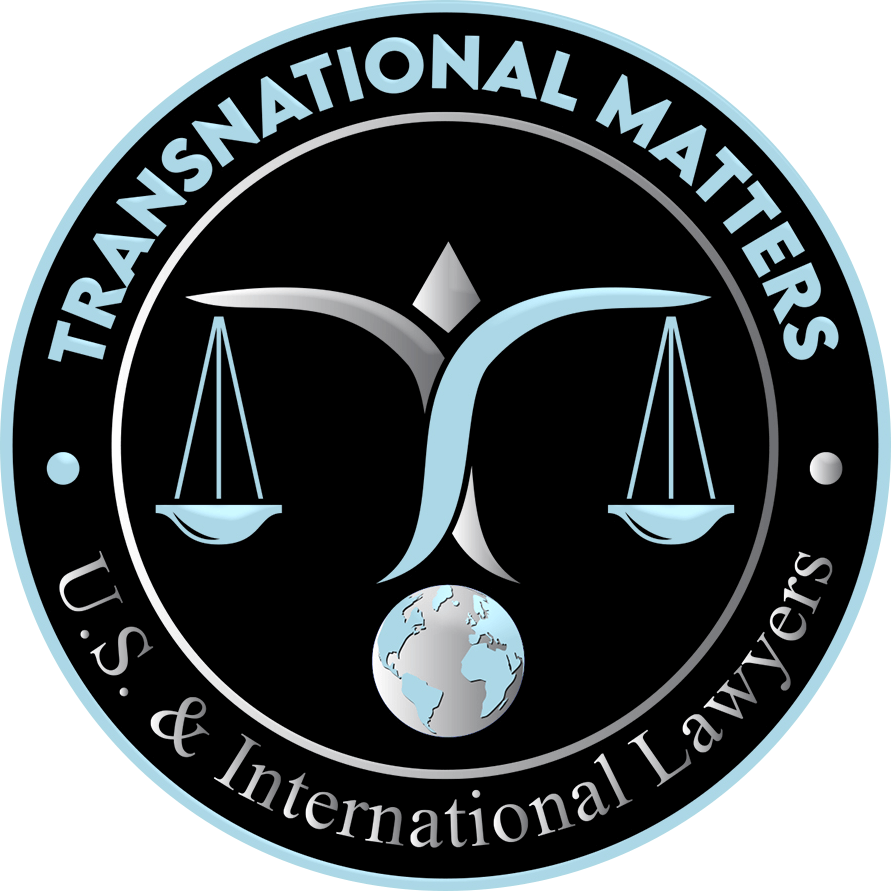As the business landscape becomes increasingly globalized, companies constantly seek to expand their operations and increase their competitive advantage. One common strategy for achieving this is through mergers and acquisitions (M&A), which involves consolidating two or more companies to form a larger entity. However, the dynamics of such transnational transactions can be complex and require careful consideration.
Various factors drive mergers and acquisitions, including the desire for market expansion, access to new technologies or products, cost efficiencies, and increased shareholder value. When two companies merge, they combine their assets, resources, and expertise to create a unified entity that is expected to be stronger than its parts. On the other hand, acquisitions involve one company purchasing another to gain a competitive edge or eliminate a rival from the market.
Understanding the dynamics of mergers and acquisitions is crucial for successful execution. This includes conducting thorough due diligence to assess the target company’s financial, legal, and operational aspects. Identifying potential synergies and integration challenges is also essential, as combining different corporate cultures and management styles can be a significant challenge.
Transnational Mergers and Acquisitions
Moreover, transnational mergers and acquisitions involve navigating complex legal and regulatory frameworks, cultural differences, and potential political sensitivities. Companies must consider country-specific laws and regulations that could impact the deal, such as antitrust regulations or foreign ownership restrictions. Additionally, cultural and language barriers can affect communication and integration efforts, requiring effective cross-cultural management strategies.
Transnational mergers and acquisitions present opportunities and challenges for companies seeking global growth. Successful execution requires careful planning, comprehensive analysis, and effective communication to navigate the complexities of the transaction. Understanding the dynamics and intricacies of M&A transactions is vital for companies to capitalize on the potential benefits while mitigating risks and ensuring a smooth integration process.
Mergers and acquisitions (M&A) are potent catalysts for change within the business landscape, driving growth, enabling synergies, and often reshaping entire industries. With many strategic objectives, companies turn to M&A to diversify their holdings, acquire new technologies, or seize more outstanding market share. Each transaction unfolds through a delicate dance, blending rigorous analysis with keen foresight to ensure value creation for stakeholders.
Navigating this terrain requires a deep understanding of the mechanisms that govern these complex endeavors. At Transnational Matters, our team of attorneys are ready to help you navigate the intricacies of Mergers and Acquisitions. Please keep reading for a comprehensive exploration.
Exploring the Primary Motives Behind M&As (“Mergers and Acquisitions”)

Corporate landscapes across industries continually evolve as entities seek to strengthen their positions, accelerate growth, and stay ahead of the competition.
Merger and acquisition (M&A) strategies are pivotal in this transformative process.
Companies often pursue M&As with varied intentions—a quest for synergy to enhance performance lies at the heart of many deals, promising increased value more significant than the sum of the separate entities.
Tapping into new markets and customer bases through diversification of products and services acts as another significant driver.
Forward-thinking corporations may bolster their offerings and market standing by acquiring cutting-edge technologies and specialized skill sets.
Geographical expansion and strengthening market presence catalyze companies to solidify their stamp in a broader spectrum.
M&As also open avenues for operational cost efficiencies, allowing the merged entity to streamline processes and capitalize on economies of scale.
Amidst these strategic considerations, organizations must navigate the undercurrents of competitive pressures that can demand swift and decisive action within the M&A arena to maintain market relevance and ensure longevity through mergers and acquisitions.
Seeking Synergy to Enhance Performance
When corporations unite through M&As, the pursuit of synergy stands at the forefront of their objectives. The combined forces aim to foster a harmonious environment where the pooling of strengths leads to enhanced operational performance and innovative outcomes.
By aligning their resources strategically, these newly formed alliances of consulting companies are poised to yield a competitive edge. Their unified operations in capital markets, consulting services, and portfolio companies are projected to deliver financial benefits and a robust standing in their respective markets.
| Strategic Objective | Expected Outcome |
|---|---|
| Resource Alignment | Competitive Edge |
| Operational Synergy | Enhanced Performance |
| Innovative Harmonization | Robust Market Standing |
Diversification of Products and Services
Diversification is crucial in M&A decisions as companies aim to broaden their horizons, reaching beyond their established markets and product lines. Through strategic acquisitions, entities can introduce a more comprehensive array of products and services, catering to a more varied customer demographic.
Expanding into uncharted territories ensures that companies mitigate risks associated with market fluctuations. By integrating diverse offerings from different economic sectors or geographical regions, these organizations stabilize their revenue streams and alleviate dependency on a singular market segment:
| Objective | Benefit |
|---|---|
| Market Expansion | Risk Mitigation |
| Product Diversification | Broader Consumer Reach |
| Service Integration | Revenue Stabilization |
Acquiring New Technologies and Skill Sets
In a rapidly advancing technological landscape, corporations leverage M&A activities to acquire new technologies that drive innovation and competitiveness. By assimilating companies with advanced technological capabilities, they aim to outpace their competitors and redefine their business models for the digital age.
- Integration of newer technologies to accelerate innovation
- Outpacing competitors with advanced digital capabilities
- Redefining business models for future growth
Securing highly specialized skill sets through mergers and acquisitions allows businesses to fill critical gaps in their workforce and strategic capabilities. The infusion of adept professionals from a private equity firm, such as a consulting firm, can fortify a company’s intellectual capital and escalate its trajectory toward market leadership.
Expanding Market Reach and Presence through Mergers and Acquisitions
Through thoughtful M&As, companies often seek to amplify their footprint, turning their gaze to regions where their brand has yet to make an imprint. Uniting with established companies in these new localities presents an accelerated path to a considerable market presence that might otherwise take years to develop organically.
Merging with other businesses introduces brands to fresh audiences and imbues them with a deeper understanding of regional market dynamics. This strategic move equips the larger entity to cater effectively to local preferences and demand, creating a loyal customer base and solidifying its global impact.
Achieving Cost Efficiencies and Savings
The amalgamation of distinct corporate entities often gives rise to significant cost savings. These savings emanate from the merged companies’ ability to combine their operations, reducing redundancies and achieving a leaner, more cost-effective structure. Transaction teams are crucial in facilitating the merger process and ensuring efficient execution.
| The aspect of M&A | Impact on Costs |
|---|---|
| Operational Overlap Elimination | Reduction in Redundancies |
| Unified Business Processes | Streamlining of Operations |
| Consolidated Vendor Management | Improved Bargaining Power |
By integrating supply chains and vendor relationships, merged organizations position themselves to negotiate more favorable terms and volume discounts. This strategic consolidation results in a more robust bargaining position with suppliers, leading to direct cost reductions throughout the supply chain. Litigators provide valuable insights and guidance in navigating legal challenges during the process.
Handling Competitive Pressures in Mergers And Acquisitions
In the theater of M&As, the urgencies imposed by competitive pressures cannot be underestimated. Entities must often engage in mergers and acquisitions to safeguard their market share against rivals’ aggressive strategies or to disrupt a market by acquiring a competitor outright.
Competitive dynamics may compel companies to consolidate, not only to eliminate threats but also to gain access to proprietary channels, carve out a more dominant industry position, and secure strategic advantages that discourage potential entrants from disrupting the status quo.
Key Steps in Transnational M&A Transactions

Mergers and acquisitions represent a significant reshaping of business horizons, with the intricacies of the process commanding meticulous attention from initiation to implementation.
As business entities anticipate the commencement of an M&A venture, they articulate a strategic approach encompassing the creation of an acquisition target list, comprehensive due diligence, careful negotiation of terms, definitive structuring of the deal, meticulous regulatory compliance, and the eventual unification of corporate cultures post-merger.
Each phase is a critical milestone with unique challenges and intricacies, demanding specialized expertise and clear foresight to navigate a successful merger or acquisition.
Preparing a Target List for Acquisition
Preparation begins with the meticulous construction of an acquisition target list, a task that entails identifying potential candidates whose attributes align with the strategic goals of the acquiring corporation. This preliminary stage demands an in-depth analysis of market conditions, potential synergies, divestitures, and financial stability of the candidates.
- Analyzing market trends and the competitive landscape
- Evaluating potential synergies with acquisition targets
- Assessing the financial health of prospective companies
Once viable targets have been earmarked, the focus shifts to quantifying benefits and risks. This crucial step ensures that only the most suitable targets, those with the greatest prospects for seamless integration and value creation, progress to the subsequent phases of the M&A process.
Conducting Preliminary Due Diligence
Preliminary due diligence serves as a cornerstone for informed decision-making in the M&A journey. This investigative stage allows acquirers to verify a potential merger’s financial, legal, and operational aspects, assuring alignment with their strategic objectives and uncovering any material issues that may affect valuations or post-merger integration.
Engaging in this critical analysis, teams scrutinize historical performance metrics, intellectual property rights, and compliance records of the target entity. This exercise not only surfaces potential risks and liabilities but also provides a clear portrait of the target’s business health, laying the groundwork for accurate valuation and crafting strategic negotiation tactics.
The Nuances of Negotiating Terms
Negotiating terms in an M&A transaction requires a keen sense of strategic positioning, with the acquirers and target company often wrestling over price, structure, and contingent issues.
Economic projections, governance clauses, and indemnification details form the bedrock of multifaceted discussions:
| Crucial Term | Definition | Relevance in Negotiation |
|---|---|---|
| Purchase Price | The monetary value agreed upon for the acquisition | Central to the negotiation; often contingent on financial health and market conditions |
| Deal Structure | The composition of payment methods and timelines | Dictates the transaction’s framework and future financial implications |
| Indemnification Provisions | Terms defining the protection against post-acquisition liabilities | Secures parties against unforeseen legal or financial issues arising after the deal closure |
This stage acts as a crucible where the merger’s viability is tested against both entities’ objectives and thresholds, shaping the approach to the proposed integration and future cooperation. Investment banks are crucial in guiding the transaction team throughout the transaction lifecycle, providing expertise in executive compensation, real estate, and employee benefits. For more information on Mergers and Acquisitions terms, please visit Investopedia.
Finalizing the Deal Structure
Ironing out the intricacies of a deal’s framework signals a transition into the advanced stages of a merger or acquisition. At this juncture, the focus is on the legal and financial scaffolding that will uphold the transaction, ensuring all regulatory requirements are meticulously followed. Litigators may be consulted to guide legal proceedings and disputes.
Transitioning from negotiations to concrete agreements, stakeholders labor over the final contract, crafting clauses that reflect the delicate balance of interests and obligations. This document is the critical blueprint from which the combined entity will operate, marking a pivotal moment where theoretical planning transforms into actionable commitments.
Navigating Regulatory Approvals
Navigating the thicket of regulatory approvals is a crucial hurdle in the M&A saga as entities aim to secure the green light from pertinent authorities. At this stage, acquiring and target companies must present their case, demonstrating that the proposed union does not violate antitrust laws or harm consumer interests. Litigators are often enlisted to provide legal expertise and ensure compliance throughout the process.
Securing endorsements from regulatory bodies often hinges on transparent disclosure of the deal’s impacts and adherence to legal protocols. Corporations may face conditions or require divestitures to proceed, ensuring their operations post-merger comply with the regulations governing the landscapes in which they operate. Litigators may also be involved to assist in navigating potential legal issues.
Integrating the Entities Post-Merger
Following the finalization of a merger or acquisition, the daunting task of integrating the entities comes to the forefront. It is a critical period where the fabric of two distinct corporate cultures is woven together, emphasizing aligning business practices and reinforcing a unified corporate identity. Mergers and acquisitions are essential drivers of growth strategy and business objectives. Mergers and acquisition consulting is crucial in navigating through the acquisition process.
Success during this phase relies on transparent communication, systematic planning, and the swift implementation of integration strategies to minimize disruption. Maintaining a clear focus on the end goals—including realizing synergies and retaining key talent—management teams work to transform the strategic vision into a cohesive operational reality.
Evaluating the Different Types of Mergers

Mergers and acquisitions (M&A) embody the strategic realignment and consolidation of business entities, seeking to reshape their competitive landscapes and unlock new avenues for growth.
Among these strategic endeavors, multiple mergers stand out, each with distinct objectives and implications for the involved parties.
Horizontal mergers focus on market domination as industries consolidate, while vertical mergers afford companies greater control over their supply chains.
Conglomerate mergers allow firms to diversify their interests across various industries, mitigating risk and maximizing potential gains.
Additionally, market extension and product extension mergers facilitate companies’ aspirations to expand their reach and innovate their portfolios.
Each type presents organizations with opportunities and challenges unique to the rationale and ambition driving the merger.
Horizontal Mergers for Market Domination
Horizontal mergers embody the strategy of companies within the same industry joining forces to augment their market share and fortify their competitive position in the capital markets. By merging, these entities form a more formidable presence, poised to dictate market dynamics and sway consumer preferences through enhanced product offerings and service capabilities.
The drive towards such mergers is often facilitated by the desire to eliminate direct competition and achieve cost efficiencies through shared resources and technologies. Entities embarking on this path aim to harness combined strengths, thereby reducing the intensity of competitive forces while extending their prowess across the industry:
| Motivation | Action | Outcome |
|---|---|---|
| Market Share Growth | Combining Forces | Influencing Market Dynamics |
| Competition Reduction | Merging Similar Entities | Strengthening Industry Position |
| Cost Efficiency Realization | Sharing Resources | Optimizing Overall Expenses |
Vertical Mergers to Control Supply Chains
Vertical mergers embody the strategic maneuvering of firms to acquire control over multiple stages of production or distribution within an industry. Such integrations are designed to tighten supply chain management, reducing costs and greater market control.
Divestitures are also a critical aspect of managing business objectives and deal value.
These affiliations create streamlined efficiencies by consolidating divestitures of upstream suppliers or downstream buyers into one singular entity. Enhanced coordination across different production levels translates to improved product delivery and service responsiveness.
Conglomerate Mergers for Varied Interests
Conglomerate mergers are strategic alliances that facilitate a firm’s expansion into unrelated business sectors, offering a tapestry of opportunities for diversification and risk management. These complex transactions reconfigure the corporate structure to create a multi-industry titan, insulated against sector-specific downturns and poised to capitalize on cross-industry potential.
Entities in such mergers anticipate leveraging a broadened base to optimize investment and innovation across different markets. Conglomerate mergers often unfold along two primary vectors: pure and mixed:
- Pure conglomerate mergers involve firms with nothing in common, venturing into distinct industries to mitigate risks.
- Mixed conglomerate mergers focus on companies seeking product or market extensions, though they operate in separate realms.
Such restructurings require astute corporate governance to maintain coherence while managing the expansive and often disparate portfolio of businesses.
Market Extension and Product Extension Mergers
Market extension mergers occur when companies join forces to gain a foothold in new geographic locales. These strategic alliances often link businesses that share similar products but operate in different markets, setting the stage for geographic expansion and fostering cross-border market penetration. Private equity firms play a crucial role in facilitating such business combinations.
Product extension mergers, on the other hand, arise when firms with related but distinct product lines unite. This merger allows the newly formed entity to offer a combined product range to its existing customer base, enhancing customer relationships and securing a competitive advantage through a diversified portfolio.
Understanding the Financing of Acquisitions

The landscape of mergers and acquisitions is as much about strategic compatibility and synergistic potential as it is about the art of financial orchestration.
Robust funding frameworks are foundational for the fruition of M&A transactions.
Entities approach the financing of acquisitions with various instruments and strategies, each offering its balance of risk and reward.
Engaging in leveraged buyouts amplifies potential returns through the strategic use of debt, while the issuance of new stock infuses the transaction with fresh equity.
Enterprises may also explore the mezzanine and hybrid securities territory as a bridge between debt and equity, or they might channel internal reserves to finance impending mergers.
With each fiscal path charting a distinct course through the financial intricacies of corporate consolidation, the astuteness with which a company navigates these options can significantly influence the acquisition’s success.
Leveraging Debt in Leveraged Buyouts during Mergers and Acquisitions
The deployment of borrowed capital is a defining trait of leveraged buyouts, wherein acquirers tap into debt financing to secure ownership of another business. This approach magnifies potential returns, as investors utilize less of their capital while controlling a more extensive asset base.
Well-executed leveraged buyouts capitalize on the targeted company’s cash flows, which are instrumental in servicing the acquisition debt. This financial strategy hinges on the target’s ability to generate sufficient revenue streams, ensuring the debt can be paid down over time, thereby strengthening the entity’s equity value post-acquisition.
Issuing New Stock for Equity Financing
The act of releasing new shares for public purchase emerges as a strategic maneuver within the sphere of M&A financing. It allows companies to avoid leveraging too much debt while injecting vitality through capital infusion.
Such an undertaking necessitates discernment, as the influx of new shares could dilute existing shareholders’ equity. Nevertheless, the fresh capital raised through this avenue is a pivotal driver for the acquisition’s financial underpinning, underlining the delicate balance between expansion and shareholder interest.
Seeking Mezzanine and Hybrid Securities
In the intricate tapestry of M&A financing, mezzanine and hybrid securities represent a sophisticated nexus between equity and debt. These instruments offer a nuanced approach to capital acquisition, often carrying debt and equity characteristics to serve the strategic financial needs of acquiring entities.
- Offering higher yields than senior debt to attract investors
- Providing the option to convert into equity, aligning interests with shareholders
- Enhancing flexibility in financial structuring with subordinate prioritization
Corporations may resort to mezzanine financing to fill gaps in capital that senior debt issuances cannot cove while preserving ownership by not diluting equity significantly: a balanced solution in the quest to finance acquisitions without overleveraging or oversaturating the market with new stock issues.
Utilizing Internal Resources for Funding
Companies can fuel their acquisitions by reallocating funds from across their operations by deploying internal capital reserves. This self-sustaining method circumvents the need for external financing, effectively shunning the complexities of debt or the potential dilution from issuing new equity.
- Reinvestment of internal cash flows
- Reallocation of budgetary surpluses
- Strategic asset liquidation
With astute management, these internal funds can be marshaled swiftly, granting the acquiring firm agility and discretion in M&A pursuits. By leveraging the financial strength inherent within their existing resource pool, corporations demonstrate fiscal prudence while nimbly pursuing strategic expansion opportunities.
The Complex Role of Due Diligence in M&A (“Mergers and Acquisitions”)

In the intricate process of mergers and acquisitions, due diligence represents an indispensable phase, serving as the cornerstone upon which informed investment decisions rest.
This rigorous examination peels back the layers of a target company to illuminate its financial stability, legal standings, operational mechanisms, and the texture of its organizational culture.
It reveals the pulse beneath the surface, ensuring that the fusion of entities aligns with the pillars of fiscal responsibility and strategic intention.
Within this domain, experts meticulously discern financial health, assess legal encumbrances, evaluate operational compatibility, and measure the cultural congruence necessary for the impending union, ultimately guiding stakeholders toward a judicious conclusion in private equity funds.
Financial Due Diligence for a Clear Picture
Undertaking robust financial due diligence provides investors with a vivid depiction of a target company’s economic reality. Scrutinizing financial statements, tax history, assets, and liabilities pinpoints the accurate valuation and uncovers any latent financial concerns.
Engagement in a comprehensive financial review illuminates cash flow trends, revenue recognition practices, and potential earnings projections. This scrutiny assists stakeholders in validating the economic prominence and estimating the growth trajectory of the combined business entity.
Legal Diligence to Prevent Future Liabilities
Legal due diligence is the bulwark against unforeseen statutory transgressions and liabilities that could arise post-merger. It thoroughly examines the target company’s legal structure, obligations, contracts, and any pending or potential litigation.
The process ensures acquirers are cognizant of compliance with industry standards, intellectual property rights, labor laws, and environmental regulations, equipping them to manage legal risks effectively. Private equity funds are especially adept at navigating business combinations and asset purchases.
Operational Due Diligence for Seamless Integration
Operational due diligence encompasses a critical evaluation of the target company’s business operations and processes to anticipate merger integration challenges. This scrutiny addresses how well the operational infrastructures of the two companies can merge, ensuring a smooth transition and continued operational efficacy post-merger.
Examiners assess the compatibility of both entities’ IT systems, manufacturing processes, and supply chain management frameworks. Recognizing and planning for the blending of these operational facets are fundamental to averting post-deal disruptions and achieving the anticipated benefits of the merger.
Cultural Due Diligence to Ensure Compatibility
Cultural due diligence delves into the meshing of corporate philosophies and values, essential for the unity and morale of a newly formed enterprise. The assessment covers leadership styles, employee engagement practices, and the overarching ethos that dictates decision-making and conflict resolution.
| Core Element | Assessment Focus | Impact on Merger |
|---|---|---|
| Corporate Philosophies | Alignment of Values and Ethics | Unified Decision-Making |
| Leadership Dynamics | Compatibility of Management Styles | Effective Governance Post-Merger |
| Employee Engagement | Consistency in Motivation and Recognition Practices | Sustained Productivity and Morale |
A harmonious assimilation of cultures facilitates smooth transitions while preserving the essence of both organizations, an indispensable outcome for achieving the strategic objectives behind the merger. By thoroughly evaluating cultural compatibility, companies are better positioned to foster a cohesive environment that drives collective success.
Strategic Valuation Methods in M&A (“Mergers and Acquisitions”) Deals

The intricate art of valuing a business within the context of mergers and acquisitions requires acute insight into numerical figures and market intuition.
With various methodologies, practitioners devise valuation models tailored to the unique contours of each deal.
Executing a rigorous discounted cash flow analysis enables estimations of future financial performance, while insights from comparative company analysis provide a real-time pulse of the market.
In scenarios of distressed sales, Asset-Based Valuations come to the fore, emphasizing tangible assets in valuation considerations.
Determining the appropriate valuation method is paramount, as it not only influences the transaction’s strategic direction but also the perceptions of value by all stakeholders involved.
Applying Discounted Cash Flow Analysis
Applying Discounted Cash Flow Analysis (DCF) remains one of the most comprehensive approaches for ascertaining the value of a target company during M&A negotiations. It entails forecasting the cash flows the company is expected to generate in the future and discounting them back to their present value using the firm’s weighted average cost of capital (WACC), a critical hinge for evaluating acquisition opportunities.
The precision of a DCF analysis lies in the meticulous projection of future free cash flows and the selection of an appropriate discount rate to ensure an accurate assessment of value. Professionals judiciously consider the company’s growth prospects, market conditions, and the inherent risks associated with the business when performing these calculations:
| DCF Component | Consideration | Role in Valuation |
|---|---|---|
| Future Cash Flows | Forecast Accuracy | Estimate of Inherent Worth |
| Discount Rate | Weighted Average Cost of Capital | Adjustment for Time and Risk |
| Terminal Value | Projection of Cash Flows Beyond Forecast Period | Accounting for Continued Growth or Decline |
Comparable Company Analysis for Market Perspective
Comparable Company Analysis (CCA) offers a lens through which analysts can glean valuation benchmarks from the market. It juxtaposes the target firm’s financial ratios and operating metrics against those of publicly traded peers, offering a marketplace vantage point to determine fair value.
By examining an array of identical market players, CCA enables an assessment of a firm’s stance within its industry context. Investment professionals use this strategy to ascertain market sentiment and investor expectations, embedding these findings into the heart of valuation discourse.
Asset-Based Valuations in Distressed Sales
Asset-based valuations are pivotal when assessing firms facing financial hardship or insolvency. This method centers on appraising a company’s tangible and intangible assets, offering a granular view of its recoverable worth irrespective of its operational success or distress.
Consulting firms provide services for asset purchases, private equity firms, deal structures, proxy contests, and more.
In the climate of a distressed sale, Asset-Based Valuations enable creditors and potential acquirers to determine a baseline value, ensuring the assets can be liquidated, if necessary, to recoup investments. This valuation form anchors itself in the intrinsic, physical assets of the business, serving as a conservative gauge of value under fraught financial circumstances. Consulting companies can provide valuable insights into this asset purchase process.
Choosing the Right Valuation for Your Deal
Deciding on an appropriate valuation method demands a deep understanding of the merger’s strategic objectives and the businesses’ unique characteristics. Professionals must weigh the anticipated synergies, industry norms, and the prevailing economic environment to select a valuation model that reflects true business worth and informs effective negotiation strategies.
Execution of the chosen approach with rigorous analytical discipline ensures stakeholders arrive at an equitable estimation, one that aligns expectations and furthers the seamless progression of the merger. The precision and suitability of the valuation technique ultimately anchor the deal’s financial integrity and underpin its success.
The Impact of M&A on Company Culture (“Mergers and Acquisitions”)

The landscape of mergers and acquisitions is not solely navigated through financial analyses and strategic alignments; it is equally about the confluence of distinct corporate cultures.
When organizations unite, the convergence of diverse cultural landscapes introduces a complex layer to the integration process.
Efforts to assess cultural congruity must be thorough, and the strategies devised to harmonize disparate work environments are critical to the merger’s success.
Leadership is indispensable in steering cultural fusion, while clear communication of changes is essential to mitigate employee resistance and uphold morale.
If approached with meticulous care and a strategic mindset, this union of cultures can enhance the cohesiveness and performance of the newly formed entity.
Assessing Cultural Fit Between Companies
Efforts to gauge the cultural compatibility between merging organizations demand a careful investigation into their respective values, beliefs, and work practices. As companies contemplate coming together, a thorough cultural assessment helps identify common ground and potential fault lines that may facilitate or impede a successful merger.
Understanding the intricacies of corporate cultures requires an examination of the day-to-day experiences, from decision-making processes to the informal social interactions that shape an organization’s atmosphere. A systematic approach toward this evaluation lays the foundation for merging entities to appreciate each other’s ethos and devise integration strategies that honor the identity of both organizations:
| Integration Strategy | Cultural Aspect | Integration Outcome |
|---|---|---|
| Decision-Making Processes | Alignment of Organizational Governance | Seamless Operational Transition |
| Social Interaction Dynamics | Fostering Shared Values | Enhanced Employee Cohesion |
| Cultural Appreciation Initiatives | Understanding Informal Company Customs | Preservation of Unique Corporate Identities |
Strategies to Bridge Cultural Differences
Blending corporate cultures necessitates tactical approaches that foster mutual respect and shared goals. Transition management teams focus on constructing collaborative platforms where input from both entities is valued, ensuring collective engagement in shaping a new, unified culture.
Commencing dialogue at the outset of an M&A process is a keystone for successful cultural integration. Leadership ensures these conversations revolve around envisioning a future that honors the heritage of both organizations while embarking on a joint path that promises growth and unity. Consulting companies play a vital role in facilitating the mergers and acquisition consulting process.
The Role of Leadership in Cultural Integration
In the nuanced tapestry of mergers and acquisitions, the mantle of leadership is vital to navigating the cultural complexities of integration. Those at the helm are tasked with the delicate duty of blending distinct corporate cultures into a single, cohesive entity.
They serve as beacons, guiding their teams toward a collective vision while carefully mitigating the cultural shock often accompanying such transformative shifts. Through their strategic foresight and empathetic approach to change management, leaders foster an environment where diverse traditions merge and a new, shared identity emerges.
- Guiding teams with a unifying vision
- Managing transformative shifts empathetically
- Fostering the emergence of a shared corporate identity
Communicating Change to Minimize Resistance
Effective communication is the linchpin in managing the human side of mergers and acquisitions. It’s the vehicle through which leaders can articulate a compelling narrative of the merger’s purpose, the rationale for changes, and the benefits that these changes will bring to individuals and the organization as a whole.
Steadfast and consistent messaging from the outset assuages uncertainties and builds trust among the workforce. Such transparency allows employees to navigate the transitional landscape with a clearer sense of direction, thus reducing resistance and fostering a receptive attitude toward impending changes.
Post-Merger Integration Challenges and Solutions

Integrating businesses following a merger or acquisition presents many challenges that can test the fortitude of even the most well-prepared organizations.
As companies embark on the delicate task of uniting their operations and systems, prudence dictates the necessity for a strategic approach to retain key talent, manage workforce adjustments, ensure brand consistency, and enhance customer experiences.
Through these pivotal efforts, company leaders must remain focused on capturing and maximizing the envisioned synergistic values underpinning the merger rationale in the first place, laying a solid foundation for sustained corporate success.
Combining Operations and Systems Efficiently in Mergers and Acquisitions
Melding the operations and systems of distinct corporate entities demands precision and strategic finesse. Critical to the process is the deployment of robust project management frameworks to orchestrate the seamless transfer and synchronization of business processes, ensuring minimal disruption to day-to-day operations.
Management must champion the integration by initiating joint operational task forces focused on the optimal interfacing of systems and processes. Their remit encompasses consolidating technology platforms, uniting logistical networks, and blending administrative functions into a cohesive, smoothly functioning whole.
Retaining Talent and Managing Layoffs
Navigating the sensitive terrain of workforce realignment post-merger necessitates balancing maintaining critical expertise and enacting necessary personnel changes. Stewarding the talent landscape requires companies to identify essential performers whose skills and knowledge are vital for future growth, ensuring their retention becomes a linchpin to ongoing operations and innovation.
Decisions surrounding layoffs, while challenging, must be addressed with a strategy that minimizes disruption and sustains morale. Executives must approach this task with clear communication, providing support and ensuring a transparent process that respects the contributions of all employees, thereby safeguarding the organization’s reputation and employee trust during the transition.
Synchronizing Brands and Customer Experience in Mergers and Acquisitions
Unifying the brand identities of merged companies is paramount to maintaining customer trust and market presence. This alignment extends beyond visual assets to encompass messaging, value propositions, and overall customer engagement strategies.
Customers should experience a seamless transition, where the consolidation of brands results in a unified, enhanced service offering. The success of this endeavor is measured by the ability to retain existing customers while attracting new ones under the combined brand umbrella.
| Integration Aspect | Customer Impact | Integration Goal |
|---|---|---|
| Brand Identity | Trust and Recognition | Unified Market Presence |
| Value Proposition | Perceived Benefits | Increased Customer Loyalty |
| Customer Engagement | Service Experience | Consistent and Enhanced Interaction |
Measuring and Realizing Synergies during Mergers and Acquisitions
Ascertainment of the projected synergies is a crucial element of the examination that follows the closure of a merger or acquisition. Analysts rigorously evaluate operational efficiencies, streamlined processes, and the degree of innovation achieved to determine if the strategic goals that motivated the combination are being met.
Realizing synergies is not a passive outcome but the result of deliberate and informed actions taken by stakeholders. Company leaders integrate diverse resources and skill sets, ensuring that the joint efforts translate into tangible value and competitive advantage for the newly formed entity. Private equity firms are crucial in business combinations, leveraging market knowledge and dealmakers to drive successful PMIs and tender offers.
Global Trends Influencing M&A Activity

Merger and acquisition activity embodies the pulse of global economic dynamism, reflecting a complex interplay of factors ranging from the burgeoning role of emerging markets to the undulating nature of economic cycles.
As organizations grapple with multifaceted geopolitical regulations and technological revolutions, these elements merge to shape the strategic decisions and tactics employed within the M&A arena.
The forthcoming discussion will cast light on the influence of these critical aspects, probing into how vital international market evolutions, policy shifts, and digital innovations forge the conditions that catalyze or restrain M&A transactions.
The Role of Emerging Markets in M&A Growth
Emerging markets are transforming the terrain of global M&A activities, acting as both battlegrounds for international corporations and hatcheries for dynamic new players. Their rapid economic growth and expansive consumer bases offer fertile ground for acquisition-led expansion.
As these burgeoning markets assert their influence on the world stage, cross-border transactions increase, with companies striving to capture market share and establish a presence in these fast-developing economies:
- Acquisitions by multinational companies in pursuit of geographic diversification
- Growth of domestic firms evolving into competitive global entities through strategic M&As
- Increased outbound M&A activity from emerging markets seeking technological and brand assets
Impact of Economic Cycles on Deal Volumes
Economic cycles exert a pronounced effect on the frequency and size of mergers and acquisitions. Expansionary phases often surge in dealmaking as confident corporates fueled by robust financial markets and accessible credit conditions seek growth opportunities through strategic investments.
Conversely, periods of economic downturn prompt a more guarded approach to M&A, with deal volumes typically receding as firms prioritize operational resilience over expansion, awaiting more precise signals of financial stability before engaging in substantive consolidations.
Changes in Regulatory Landscapes Globally in Mergers and Acquisitions
Shifts in international regulatory frameworks are pivotal factors driving the trajectory of mergers and acquisitions.
New policies and legislative amendments introduce complexities that necessitate nimble adjustments in strategies for corporations engaged in cross-border transactions:
- Adaptation to evolving antitrust regulations
- Compliance with stringent data protection laws
- Conforming to foreign investment thresholds
Entities must exhibit comprehensive understanding and foresight to maneuver within these ever-changing regulations, ensuring the viability of M&A endeavors globally.
Advancements in Technology and M&A Opportunities (“Mergers and Acquisitions”)
Technological advancements ignite an evolving landscape within the realm of mergers and acquisitions. They propel firms to seek partnerships or takeovers that promise the integration of cutting-edge tools to refine their operational capabilities and disrupt established market patterns.
The proliferation of artificial intelligence, machine learning, and blockchain technologies creates a catalyst for M&As, as companies aim to harness these innovations to drive transformational growth and secure a formidable competitive stance in a landscape where technological prowess increasingly dictates market leadership.
Handling Legal Aspects of Mergers and Acquisitions

The legal intricacies of mergers and acquisitions represent a crucial facet of any transaction, with challenges requiring astute navigation and legal acumen.
Corporations face the daunting task of steering through antitrust legislation to avert regulatory pitfalls while meticulously addressing the complexities of intellectual property ownership post-merger.
International laws add another layer, necessitating a nuanced understanding of trans-border legal environments.
Furthermore, precise crafting of agreements and warranties is paramount, laying down the legal frameworks that bind the entities in their new alliance.
Within this sphere, legal professionals strive to build a robust construct that upholds the transaction’s integrity, secures a smooth M&A process, and ensures adherence to the intricate web of governance encapsulating these corporate maneuvers.
Navigating Antitrust Laws and Regulatory Hurdles
Navigating the complex terrain of antitrust laws presents a significant challenge during mergers and acquisitions, with firms needing to ensure their consolidation doesn’t contravene competition regulations. Legal teams engage vigorously to anticipate and address potential regulatory objections, devising transaction structures that withstand scrutiny from authorities, thereby securing transaction momentum.
Entities embarking on these corporate unions must adeptly clear regulatory hurdles that extend beyond initial antitrust considerations, confronting legal obligations from diverse jurisdictions if the merger spans multiple countries. Mastery over these legal intricacies ensures the smooth progression of M&A activities, preserving the strategic intent and value envisioned from such corporate amalgamations.
Addressing Intellectual Property Concerns
Intellectual property (IP) concerns are at the vanguard of legal considerations during any merger or acquisition. With organizations vying for a strategic edge, the methodical assessment and integration of IP assets are indispensable for the merged entity’s long-term success and innovative capacity.
- They are systematically evaluating the strength and validity of IP portfolios.
- They are strategically aligning IP assets with the company’s core objectives.
- Negotiating IP representations and warranties within M&A agreements
Executing due diligence on IP rights mitigates the risk of future litigation that could influence a company’s operations or financial health. Such prudence ensures the IP assets—be they patents, trademarks, or copyrights—that form the cornerstone of a firm’s value proposition transition smoothly into the vein of the new corporate structure.
Ensuring Compliance With International Laws
In the global theatre of mergers and acquisitions, adherence to a tapestry of international laws is imperative. Transnational deals propel corporations to grasp and abide by many legal systems, each harboring its nuances and mandates that govern corporate transactions. Consulting firms provide valuable expertise in navigating the complexities of United States and international mergers and acquisitions law.
Corporations must skillfully operate within these variegated legal landscapes to facilitate deals that are lucrative and compliant with international statutes. The judicious engagement with global regulatory standards is a cornerstone of successful mergers and acquisitions, ensuring entities transcend geographical and legal barriers to accomplish their strategic objectives.
Arranging Contractual Agreements and Warranties
Drafting contractual agreements necessitates scrupulous attention to detail in the intricate framework of mergers and acquisitions. These documents enshrine the terms of the impending partnership, delineating rights, obligations, and contingencies with unwavering precision.
Warranties play a critical role as safeguards within M&A agreements, serving as formal assertions that attest to the integrity of the target entity’s disclosed information. Their inclusion acts as a protective mechanism, mitigating risks by ensuring recourse in the event of misrepresentation or withheld critical data:
| Contractual Element | Description | Purpose |
|---|---|---|
| Terms and Conditions | Provisions outlining the rights and obligations of the involved parties | Clarify expectations and delineate the scope of the agreement |
| Warranties | Guarantees regarding the accuracy of information provided by the target company supply a form of indemnity against unforeseen liabilities stemming from inaccuracies |
Frequently Asked Questions
What are the primary motives that drive companies to engage in mergers and acquisitions?
Companies typically pursue mergers and acquisitions to bolster their market position by acquiring competencies and resources, to achieve economies of scale, or to expand their footprint into new territories. Often, these strategic moves are fueled by the desire to enhance shareholder value through revenue growth, diversification of the product portfolio, and the potential for cost synergies.
Can you explain the step-by-step process of a typical merger and acquisition deal?
Indeed, unraveling the intricacies of a merger or acquisition unveils a multistage process, where companies initially pinpoint potential targets before advancing to meticulous due diligence. After reaching a mutual agreement, legal formalities are navigated, after which integration strategies lay the foundation for a united corporate entity.
What are the different types of mergers, and how do they differ from one another?
Mergers fall into several categories, each characterized by the specific strategic objectives and operational synergies sought by the combining entities. The distinctions among merger types lie in the nature of the relationship between the companies involved and the goals they aim to achieve through unification.
Corporate landscapes are forever altered through merging, an undertaking that comes in diverse forms, manifesting as follows: horizontal mergers between competitors within the same industry, vertical mergers forming supply chain alliances, and conglomerate mergers, which unite companies across unrelated business sectors for diversification. Market extension mergers connect companies seeking to expand their reach into new markets with similar products. In contrast, product extension mergers unify firms offering different but complementary goods to a shared customer base. These mergers also impact technology transactions.
At the heart of these transactions, underlying motives may vary from scaling operations and reducing competition to tapping into new markets and broadening product lines. Critical to each merger type is a unique set of competitive, financial, and regulatory implications that demand careful consideration before any two businesses become one.
How do companies finance their acquisitions in the context of mergers and acquisitions?
Amidst the complex landscape of mergers and acquisitions, companies typically enlist a mix of equity, debt, and internal reserves. Strategies unfold as a balancing act between minimizing costs, optimizing capital structures, and aligning with long-term strategic objectives.
What is the role of due diligence in the success of mergers and acquisitions, and why is it considered complex?
Due diligence serves as the critical process of evaluating and understanding the risks and potential of a company before finalizing a merger or acquisition, helping stakeholders make informed decisions and avoid costly mistakes. Its complexity stems from the myriad financial, legal, and operational factors that must be carefully examined and weighed against potential growth opportunities and synergies between the entities involved.
Conclusion
Understanding the dynamics of mergers and acquisitions (M&A) is vital for businesses seeking to navigate the complexities of corporate restructuring effectively. Companies can formulate strategic initiatives that enhance competitiveness and growth by grasping the various motives driving M&As, such as seeking synergies, diversifying services, acquiring new technologies, expanding market reach, and realizing cost savings. At Transnational Matters law firm, we provide a comprehensive approach to the M&A process. Our attorneys ensure thorough preparation, due diligence, negotiation, and careful consideration of financing options.
In addition, our attorneys consider the following: cultural integration, addressing post-merger challenges, and staying attuned to global economic trends and legal implications. Mastery over M&A dynamics enables companies to achieve successful integrations and capitalize on these corporate events’ opportunities. To learn more about our practice, Contact Our Office, Today

